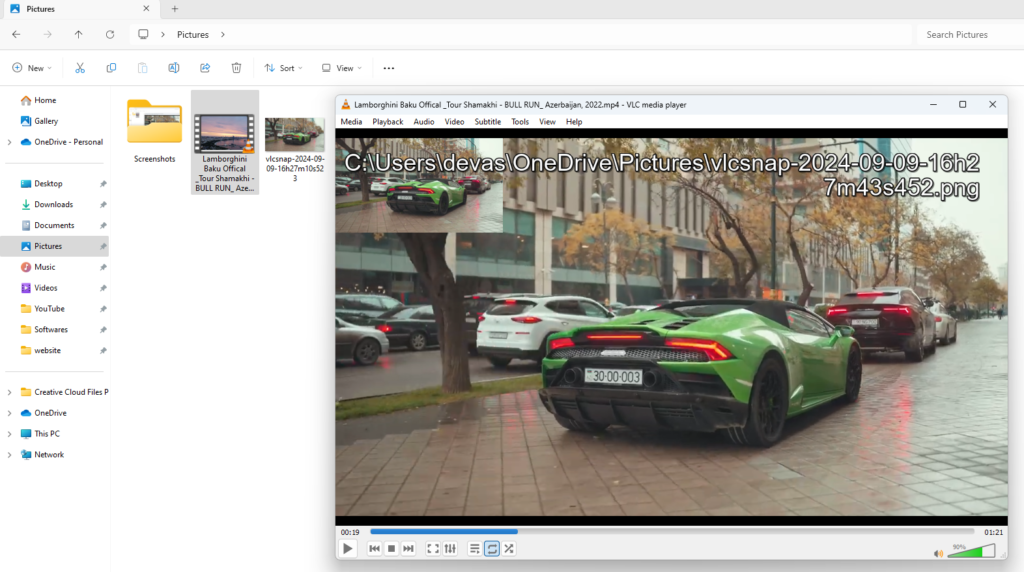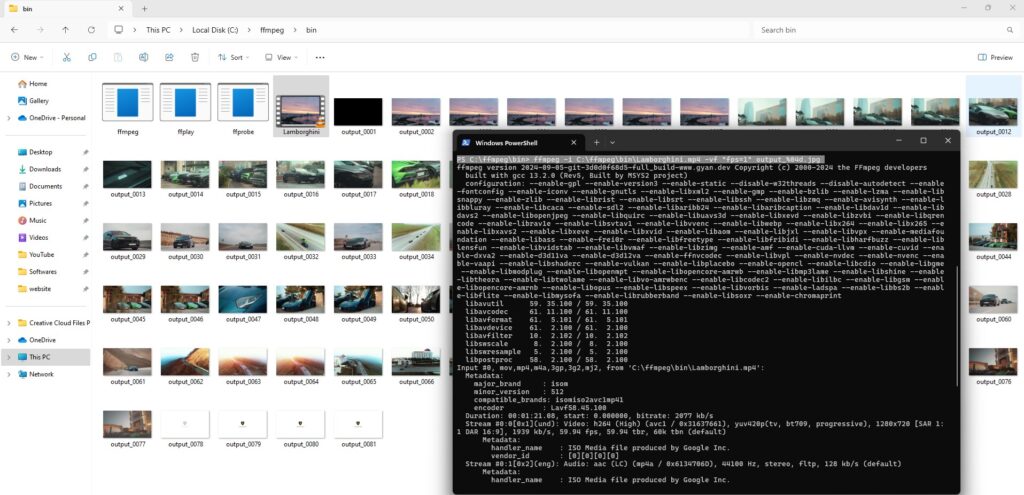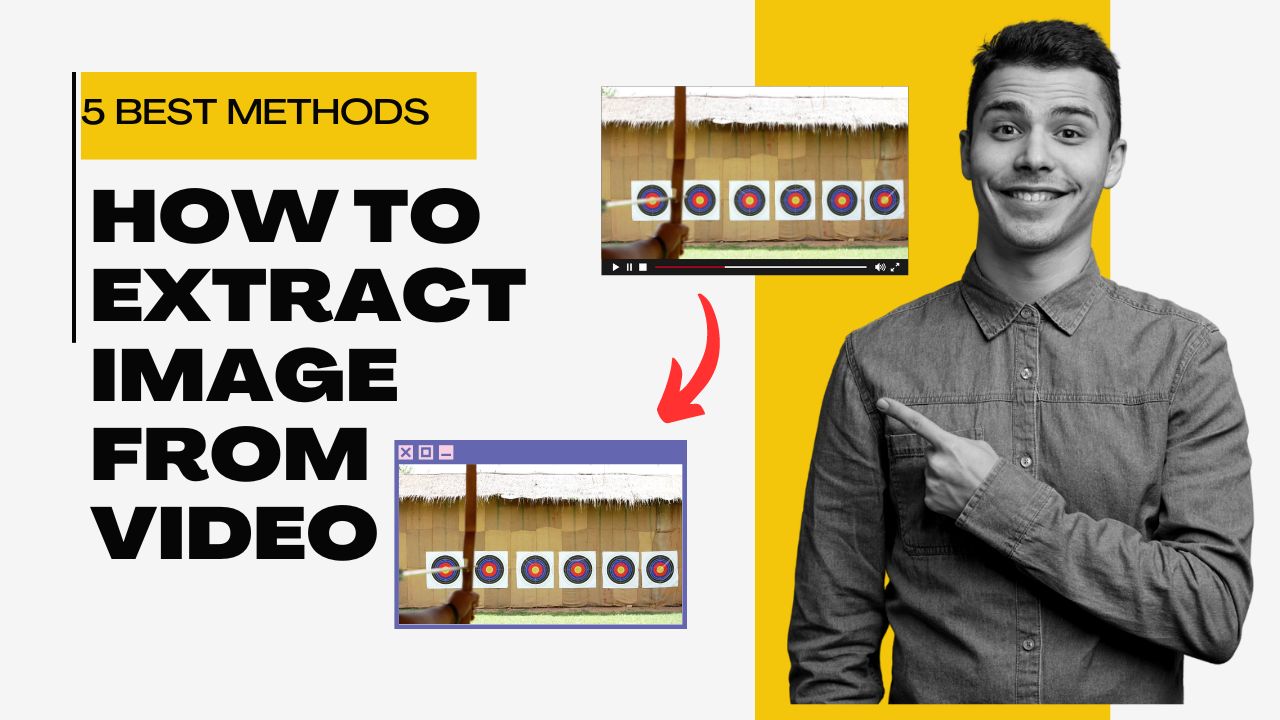Extracting images from a video is a common task for content creators, video editors, and even casual users who want to capture a specific frame. In this guide, we’ll explore the best ways to extract images from videos in 2024 using different tools. Whether you’re creating thumbnails, capturing a memory, or referencing a design, learning how to extract images from videos is invaluable.
Table of Contents
Why Extract Image from Video?
There are several reasons why people want to extract an image from a video:
- Thumbnail Creation: You can easily create engaging video thumbnails.
- Memory Preservation: Capture a moment in your favorite video.
- Creative Reference: Designers or editors often need to reference a specific frame.
No matter the reason, knowing how to extract an image from a video is crucial for many users.
5 Best Methods to Extract Image from Video
Let’s explore five methods that can help you easily extract image from video using free software, online tools, and even programming approaches.
1. Using VLC Media Player
VLC Media Player is a free, open-source media player that makes it easy to extract images from videos.
Steps to Extract Image from Video Using VLC:
- Steps to Extract Image from Video Using VLC:
- Download VLC: Get it from the official VLC website.
- Open Your Video: Load the video in VLC.
- Extract the Image: Press Shift + S to take a snapshot.

5. Automatic Extraction: Use the command line to extract frames automatically at intervals:
vlc -I dummy video.mp4 --video-filter=scene --scene-ratio=24 --scene-prefix=img- --scene-path=/output/ vlc://quit2. Extract Image from Video Using FFmpeg
FFmpeg is a powerful tool that allows you to manipulate and extract images from videos via command-line operations.
Steps to Extract Image from Video Using FFmpeg:
- Install FFmpeg: Download it from the official FFmpeg website.
- Command to Extract Image:
ffmpeg -i input_video.mp4 -vf fps=1 frame_%04d.png

Advanced Options: You can also specify the time range for extraction:
ffmpeg -ss 00:01:00 -i input_video.mp4 -to 00:02:00 -vf fps=1 frame_%04d.pngWhy Use FFmpeg?
- Precise Control: It offers flexibility and control over the extraction process.
- Automation-Friendly: Great for batch video processing.
3. Extract Image from Video Using Online Tools
Several online tools can help you extract image from video without needing to install any software.
Popular Online Tools:
- EZGIF: This tool allows you to upload your video and select frames to extract.
- Website: EZGIF
- Website: EZGIF
- Online Converter: Convert video frames into images with ease.
- Website: Online Converter
Why Use Online Tools?
- No Installation: Ideal for quick tasks without downloading software.
- Simple Interface: Perfect for casual users.
4. Using Adobe Premiere Pro
For professional editors, Adobe Premiere Pro offers an easy way to extract an image from a video.
Steps to Extract Image from Video Using Adobe Premiere Pro:
- Import Your Video: Load the video into Premiere Pro.
- Select the Frame: Use the timeline to find the frame you want.
- Export the Frame: Click the camera icon or press Ctrl + Shift + E to export the frame.
Why Use Premiere Pro?
- Professional-Grade: Perfect for high-quality image extraction.
- Precision: Offers fine-tuned control for exact frame extraction.
5. Using Python and OpenCV
For developers, Python and OpenCV offer a programmatic approach to extract images from video.
Sample Code to Extract Image from Video:
import cv2
# Load video
video = cv2.VideoCapture('input_video.mp4')
count = 0
while True:
success, frame = video.read()
if not success:
break
cv2.imwrite(f"frame_{count}.jpg", frame)
count += 1
Why Use Python and OpenCV?
- Automated Extraction: Perfect for bulk image extraction.
- Customizable: Allows you to write custom scripts tailored to your specific needs.
Conclusion
Learning how to extract image from video can save time and help with content creation, memory preservation, or professional projects. Whether you’re using a simple tool like VLC or leveraging the power of FFmpeg and Python, these methods will help you extract images efficiently.
For casual users, online tools or VLC might be the best choice. For professionals, Adobe Premiere Pro or FFmpeg offers the precision and control required. Meanwhile, for developers, Python and OpenCV provide programmatic extraction for large-scale tasks.
With these five methods, you now have everything you need to extract an image from a video, no matter the complexity of the task.

